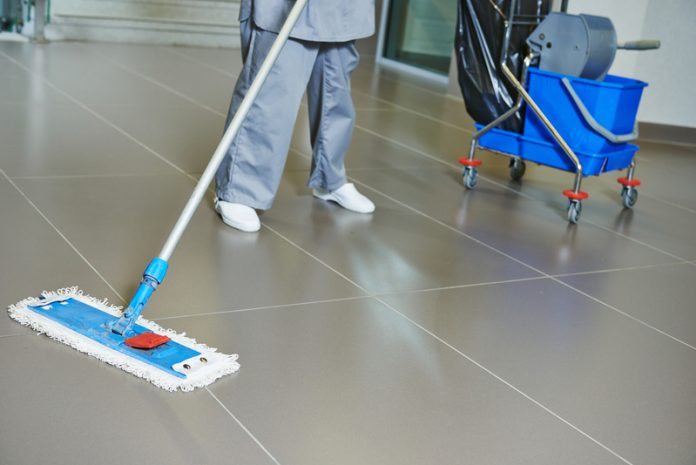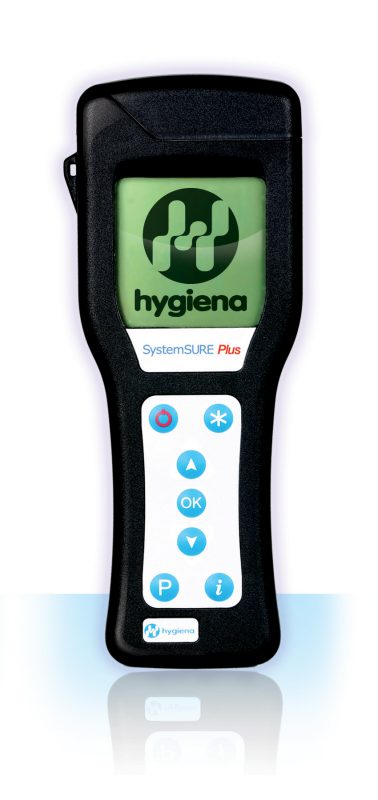Martin Easter, General Manager at Hygiena International Ltd highlights the importance of cleanliness in hospital settings…
“Measurement is the first step that leads to control and eventually to improvement.
If you can’t measure something, you can’t understand it.
If you can’t understand it, you can’t control it.
If you can’t control it, you can’t improve it.” (H James Harrington)
Healthcare associated infections (HCAIs) are preventable. WHO statistics show a prevalence of 7.1% in Europe, affecting 4.1 million patients and costing €7bn and 37,000 deaths per annum. In the UK the prevalence is 6.4%, affecting 300,000 patients and costing £1bn.
The patient environment is recognised as a reservoir of contamination where bacteria can survive up to 60 days on surfaces. Unclean surfaces and hands of healthcare workers are claimed to be responsible for 20 to 40% of HCAIs, and the emergence of superbugs without suitable antibiotic treatments is a major challenge for the future. Evidence shows that de-germing the environment reduces infection risks and there is a cost benefit of effective cleaning.
Cleaning is one of the primary preventative measures against HCAIs. The NHS spends £725m per annum on cleaning and the NHS Productivity Review (2016) showed that £93m could be saved from a better control of cleaning. However, cleaning is inadequately measured by visual assessment methods that are highly subjective and only detect gross lapses of practice. Visual assessment gives a “misleading over-estimate of cleaning that undermines infection control strategies” (Jones 2009).
The National Institute of Health Research recognises that, “NHS places greater reliance on visual assessment of surface cleanness. However, reliance on observational evidence in judging cleaning efficacy is subjective and may be of questionable validity……. The use of ATP bioluminescence can provide this, giving an instant indication of total surface contamination and importantly an objective assessment of cleanliness. ATP detects invisible contamination and tells us that the surface has been cleaned.”
ATP bioluminescence is a simple rapid method for measuring organic soil. It requires a small hand held instrument and an all-in-one sample collection and testing device, which generates a numerical result in 15 seconds. The use of ATP bioluminescence for cleaning verification is well established and has also been the highest recommendation by the Rapid Review Panel of the Department of Health and Public Health England in support of the fight against HCAIs. The test is also recognised by the Centre for Disease Prevention and Control (CDC) in USA and is written into a standard for cleaning in Denmark and Sweden.
Earlier adopters such as North Tees and Hartlepool Trust have shown a consistent and marked improvement in cleanliness and reductions in infection rates since its introduction in 2008. The results have shown a >20% improvement in pass rates and a large reduction in fail scores to fewer than 5%, with a corresponding decrease of 35% in C. difficile cases and a 39% reduction in infections per 10,000 occupied bed days. Monitoring officers, independent from nursing and environmental services staff, are assigned to act as project champions for individual facilities, reporting to departmental managers wherever poor cleaning was discovered and where corrective action is required. Monthly reports are circulated for cross-functional team meetings of nursing, facilities and infection control staff. This allows for open discussions on all cleaning and maintenance related issues and stimulates actions for improvement.
The Hygiena SystemSURE Plus received the highest recommendation for the Department of Health and Public Health England’s Rapid Review Panel in 2009 and it has many different applications within hospitals including the routine testing of patient room, identification of hotspots and hazard management, training of cleaning staff, and hand wash training and verification.
The benefits of the ATP cleaning verification system include, a dramatic improvement in hospital cleanliness, optimised cleaning performance and personnel training, increased productivity commitment and moral of cleaning staff and reduced infections rates.
Southport and Ormskirk NHS Trust have been using the ATP technology for more than 5 years for several applications and departments from medical equipment library, ITU, IP&C, domestic services, planned care, catering and operating theatres. It is also used for hand hygiene training and compliance monitoring. Andrew Chambers explained: “We also use Hygiena ATP monitoring when we may have had an incidence of VRE. For example, after a clean, the area might look clean but a number of spot ATP tests might show that the area is, in fact, not clean.
“ATP gives you a clean hospital,” said Val Hulme (team leader, domestic services). “When you’re doing a deep clean, the staff know they are going to be tested but they do everything to a very high standard now. ATP has helped us to achieve that.
“When you have a number – like the ATP machine gives you – it’s more objective than subjective. You can’t argue with it. ATP makes the staff competitive. They all want to score five or below. And ideally zero.”
Andrew explained further: “The results of the ATP monitoring are incorporated into the weekly infection prevention and control performance report, which is circulated trust-wide. It includes a breakdown of the results of commode cleanliness, amongst a range of other items, area by area.
“This adds a competitive edge and drives the staff to achieve a low score. It’s there to encourage people, to make them aware. If they’re doing a good job, it’s a low number and the staff are delighted.
“If we have an area of concern with a particular infection or organism – we use ATP as part of the investigation.” Andrew added. “The benefit is that with ATP we can react immediately to the results on site and put any necessary interventions into immediate effect. That way we’re safeguarding patients, which is what it’s all about. Low numbers mean it’s a safe environment for patients to be in.”
Similar improvements are seen in USA where the CDC also recommends the use of ATP as part of the monitoring tool kit for environmental cleaning. The Environmental Services (EVS) manager (Gomez) at Deaconess Rehabilitation Hospital in Evansville, Indiana said “Realising that our surfaces were not as clean as we thought was—quite honestly—a slap in the face. But it was a good wakeup call for everyone, especially me. As EVS leaders we sometimes think our processes are flawless and we don’t make mistakes because we’ve been in the industry for so long. We become overly confident—and that can be our worst quality. We have to be open to the idea that we are bound to make mistakes. How from those mistakes and improve our processes is what will help us to become confident and assertive leaders.”
“ATP testing has truly helped us become aware of our cleaning techniques,” Gomez says. “We now hold educational meetings to discuss the program’s success and areas where we still have trouble—to make sure we’re quick to correct any problems that consistently show up in our ‘fails’ report.”
A review by an independent company rated the Evansville healthcare system the highest score for cleanliness among the more than 600 facilities the company surveyed. ATP testing played a significant role in that achievement.
The EVS department also reports results of ATP inspections to the infection control specialist and committee. “Our infection control specialist has actually watched us do our inspections to see how staff performs that duty. Our infection rates are very low—and that’s a credit to everyone,” added Gomez.
Regular objective monitoring of cleaning increases compliance of cleaning policies from 40% to 82%. This decreases contamination levels, reduces infection rates, maximises the use and value of existing resources thus saving time, money and lives.
Martin Easter
General Manager
Hygiena International Ltd
enquiries@hygiena.net
Please note: this is a commercial profile












